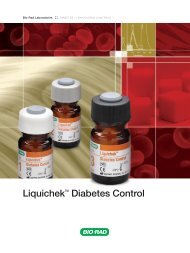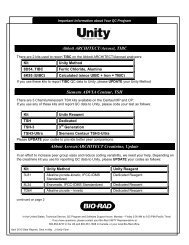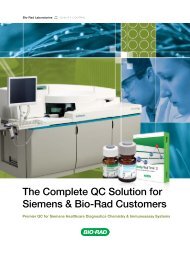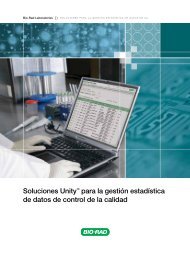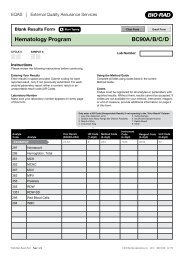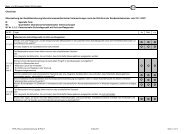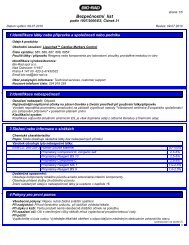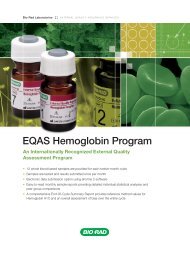EQAS Program User Guide - QCNet
EQAS Program User Guide - QCNet
EQAS Program User Guide - QCNet
Create successful ePaper yourself
Turn your PDF publications into a flip-book with our unique Google optimized e-Paper software.
Chapter 9: GlossaryAssay1 A quantitative determination or measurement of the amount, activity, or potency of a constituent; aquantitative assessment of an analyte.2 To analyze or measure a sample of a specimen to determine the amount, activity or potency of a specificanalyte or substance.Assay RangeThe upper and lower limits of the amount, activity, or potency of a specific analyte between whichmeasurement is possible.BatchA single, homogeneous quantity of product manufactured at the same time. For <strong>EQAS</strong>, there are typically fourbatches in each program cycle, with each batch comprised of three replicate samples.Batch Z-score HistogramA visual representation (see histogram) of participants’ Z-score distribution in a given batch. The X-axis(horizontal) shows the Z-score value (0 as central value). The Y-axis (vertical) shows the highest number ofresults in a given bar.Bias1 A measurement of how far an observed value is from the consensus value. This can be expressed as apercentage (as in percentage deviation) or as a Z-score.2 The systematic deviation of the test results from the consensus value. One or more systematic errorcomponents may contribute to the bias.Comparator or Consensus GroupLaboratories’ submitted results that are statistically compared together for a select analyte/parameter within adefined <strong>EQAS</strong> sample. Your comparator is that against which your own result was evaluated for adetermination of laboratory performance and is the value plotted on the top of the Levey-Jennings chart. Yourcomparator is dependant on the dataset being uni-modal or multi-modal. At each comparator level, at least 9results should be received for your lab’s comparison to be made at that level. The comparators or consensusgroups are (from most specific to least specific): Peer, Method, Mode, All Results.• Peer (most specific)The Peer consensus group consists of all laboratories using the same instrument, reagent, and analyticalmethod of a test. This is the ideal group for comparison.• Method (next specific)The Method consensus group includes laboratories using the same analytical method of a test. If thereare an insufficient number of laboratories in the Peer group, the Method group will be your next level ofcomparison with the following exception: Should a Method have a multi-modal distribution of results, yourcomparator level will go from Peer to the Mode level.98 <strong>EQAS</strong> <strong>Program</strong> <strong>User</strong> <strong>Guide</strong>





